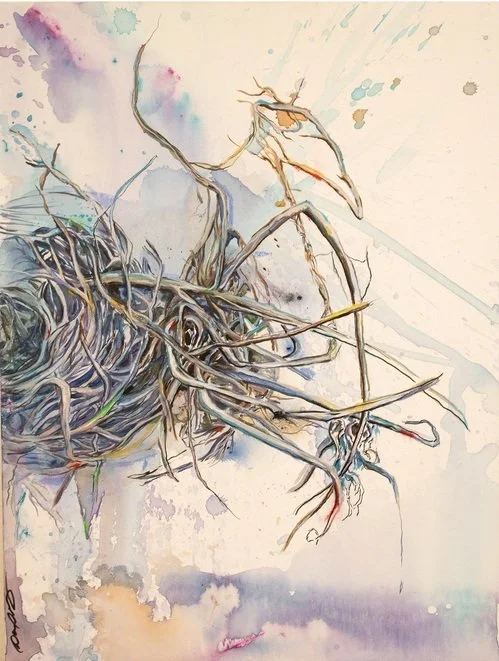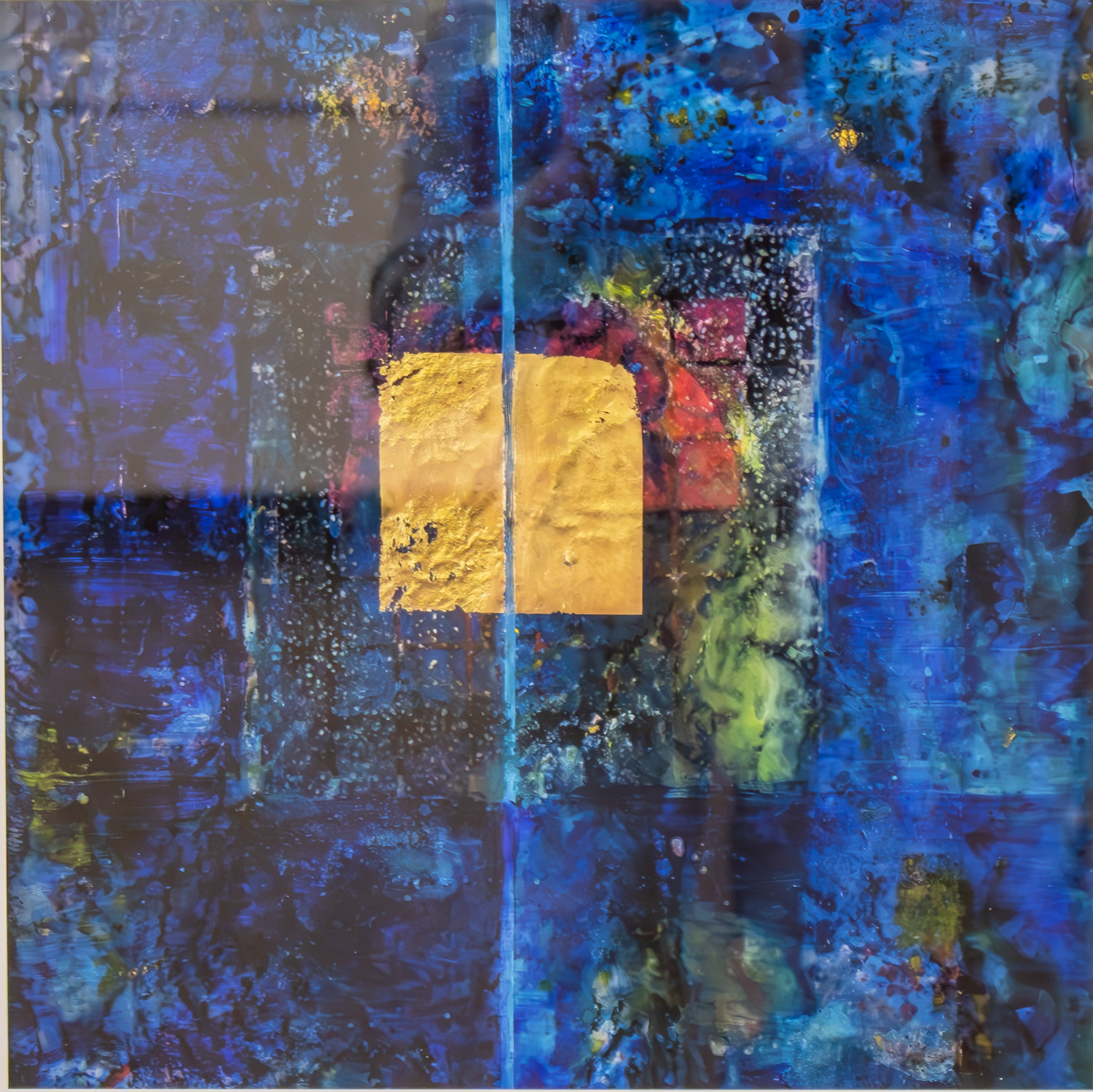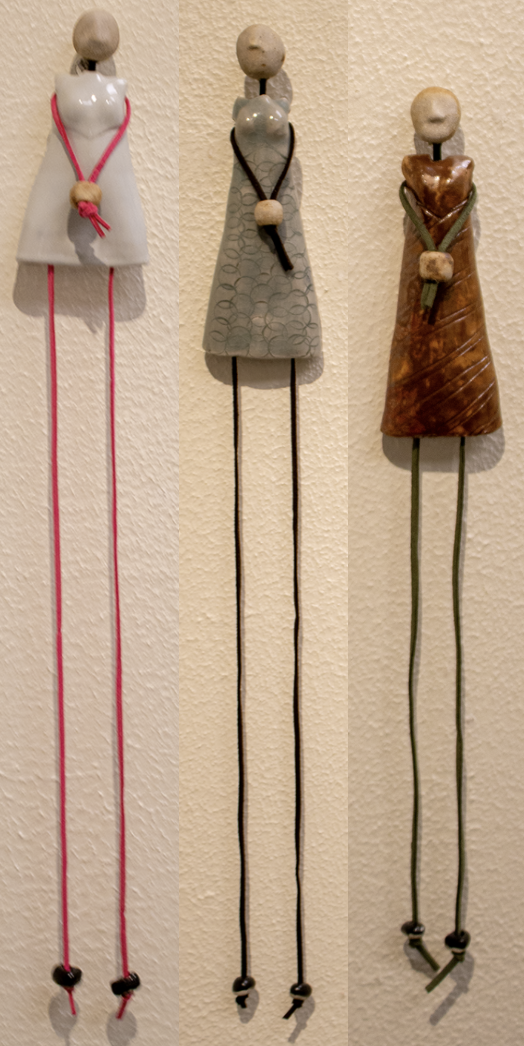Showcases and Sunshine in the Paseo
By Juliana Trillo
May is a spectacular, busy month for the Paseo Arts Association. In addition to the 48th annual Paseo Arts Festival on the last weekend of the month, the PACC will open three shows during the First Friday Art Walk on May 2nd! We will be holding Echoes of Nature by David Gipson in Gallery I, the Paseo Arts Collective Showcase in Gallery II, and Scenes from a Film by Clayton Beavers in Gallery III.
All three shows will be open until the end of the Paseo Arts Festival on May 26th, 2025.
Gallery I: Echoes of Nature - David Gipson
Left: Dream by David Gipson
Gallery I holds various paintings and mixed media works by David Gipson. Describing his style as a mix of realism and abstract art, Gipson adds transparency and vibrant layers of color to realistic compositions of natural scenes. When observing his work, visitors can recognize the forms of nature like trees, nests, etc., and look at them through Gipson’s lens of deep introspection. Gipson’s paintings experiment with splashing, gnarled shapes in his depictions of birds’ nests, trees, and the positioning of his abstract figures. His branches are outstretched and contorted towards the edges of the canvas in striking zig-zags that mirror the jagged forms of lightning bolts. His work explodes in dynamism towards the viewer despite them being still scenes of nature.
Buffalo Dance by David Gipson
Liminal Space by David Gipson
Buffalo Dance is the only painting in this show with an explicitly human figure, and its limbs mimic those of the contorted tendrils surrounding it, integrating the realistic human figure into the abstraction of the artwork. In Spring Rebirth, Gipson cleverly paints folded leaves at the right place and size to resemble the shape of a bird next to the egg inside of a bird’s nest.
Although most of the pieces within this show follow Gipson’s favored blend of realism and pale abstraction, pieces like Liminal Space and the Eclipse series disrupt this trend. Liminal Space is a more realistic and lush scene with a clearer horizon line, while Eclipse I and II succumb to total abstraction. The duo represents a celestial phenomenon instead of a natural one. Gipson uses rich colors to make two woodblock print works that are visually similar to the work of Suprematist artists like Kazimir Malevich.
Eclipse I by David Gipson
Gallery II: Paseo Artist Collective Showcase
Located in our second gallery, the Creativity Center is hosting a showcase for the Paseo Artist Collective! The group consists of artists from all around the Paseo Arts District, including some of those housed here as studio artists and employees. This show includes incredibly detailed and beautiful handiwork in a wide range of media, from digital illustrations to jewelry.
Rise Up by Amy Jo Garner
Generations by Sherry Klechka
The Generations series by Sherry Klechka is a warm representation of intergenerational connection and maternal bonds, with ample chances to resonate with viewers as we approach Mother’s Day. There are two gorgeous and intricate mixed-media needlework pieces by Amy Jo Garner featured along with natural landscape paintings by Terry Clark and Mary Grabow. Clark and Grabow’s pieces are calming and immersive with their soft application of color when depicting grass, sand, and clouds. Continuing the realism of their paintings are two animal portraits by Debbie Flynn of a cow and bear, respectively. They’re both carefully painted to allude to the texture of fur. Accompanying the realistic artwork are imaginative illustrations by Connor Albrightson, vibrant pop portraits by Roger Garner, and beautiful metalwork by Avril Martin.
Gallery III: Scenes from a Film - Clayton Beavers
Trying to Rope a Dream by Clayton Beavers
Clayton Beavers’ paintings will be featured in our second gallery. Beavers intended for his paintings to operate as a storyboard for a film that constructs itself in the mind of the visitor. While he takes inspiration from early Western movies, his art subtly subverts the traditional “cowboy” narrative through his untraditional portrayal. Beavers’ use of florals, pastels, and contrast in saturation between the figures and their backgrounds implies a more contemporary narrative than a John Wayne film like The Searchers (1956).
Sheriff’s Posse by Clayton Beavers
.
Sweet Release by Clayton Beavers
Sheriff’s Posse operates as two works in one. In the scene to the left, the two figures on horseback are cast in shadow, making their faces nondescript. This choice of lighting works to devalorize the cowboy figure and places the implied protagonists in a calmer setting. Beavers further defocuses the details of the cowboy in the scene to the right by fully enshrouding the figure in either fog or abstracted nothingness. The only discernible features are the rider’s hat, gun, and the dust kicked up by their horse. The rider’s red bandana is the only colored element of the whole piece. The red bandana is a consistent appearance throughout the exhibition, becoming a motif in the visitor’s “movie”. The artist likes to use bold colors against washed-out, lighter backgrounds, or conversely, black-and-white subjects against colored backgrounds, to create an uncanny separation between the subject and the setting.
The pieces in Beavers’ Gunfight series have a more directly linked narrative. Much of the work in Scenes from a Film that illustrates nature has a more impressionistic style in both color and paint application, following the stylistic choices of Anglo-American artists like Frederick Remington. Overall, the Clayton Beavers exhibition is an exciting experimentation with story-building, contrasting colors, and style variance.
Left: Gunfight 1,2,3, and 4 by Clayton Beavers










